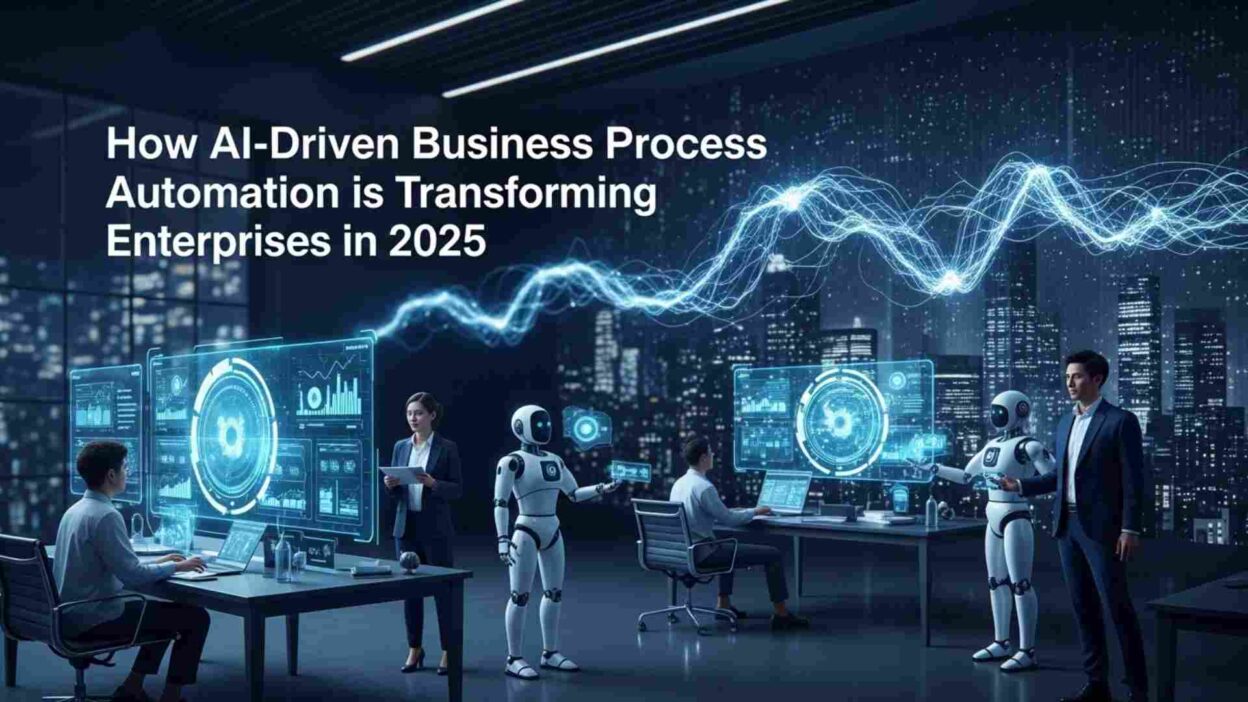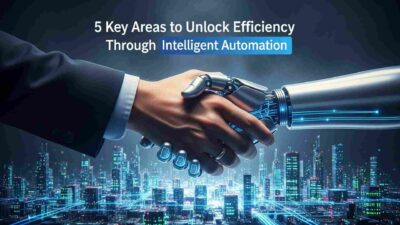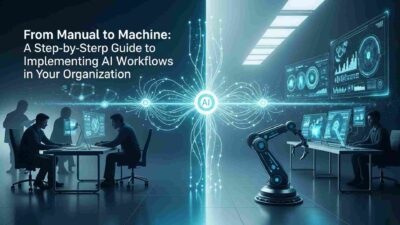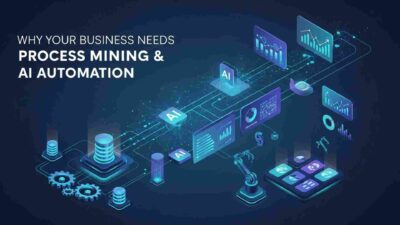Introduction
TL;DR The business world stands at a pivotal moment. Companies face mounting pressure to deliver faster results while cutting operational costs. Traditional methods no longer meet these demands. AI-driven business process automation for enterprises has emerged as the solution that forward-thinking organizations desperately need.
Enterprises across manufacturing, finance, healthcare, and retail sectors now leverage intelligent automation to streamline operations. The technology handles repetitive tasks that once consumed countless employee hours. Decision-makers recognize this shift as essential rather than optional.
The transformation extends beyond simple task automation. Modern systems learn from data patterns and adapt to changing business conditions. They predict outcomes and suggest improvements that human analysts might miss. This represents a fundamental change in how companies operate and compete.
Table of Contents
Understanding AI-Driven Business Process Automation
What Makes This Technology Different
AI-driven business process automation for enterprises combines artificial intelligence with traditional automation frameworks. The system doesn’t just follow pre-programmed rules. It analyzes situations and makes intelligent decisions based on learned patterns.
Machine learning algorithms power these platforms. They process vast amounts of data in seconds. Natural language processing enables systems to understand human communication. Computer vision allows automation to interpret visual information just as humans do.
The technology continuously improves through experience. Each transaction teaches the system something new. Errors become learning opportunities rather than failures. This self-improvement capability sets modern automation apart from legacy systems.
Core Components That Drive Success
Several technologies work together to create effective automation solutions. Robotic process automation handles repetitive digital tasks. Machine learning models predict outcomes and identify patterns. Natural language processing interprets customer queries and documents.
Integration capabilities connect disparate systems across the enterprise. Data flows seamlessly between departments and applications. Analytics engines provide real-time insights into process performance. Security protocols protect sensitive information throughout automated workflows.
Cloud infrastructure supports scalable deployment across global operations. APIs enable quick connections to existing business tools. Low-code platforms allow non-technical users to build automation workflows. These components create a comprehensive ecosystem for enterprise transformation.
The Evolution From Traditional Automation
Early automation focused on simple rule-based tasks. Systems executed fixed sequences without deviation. Any exception required human intervention. This rigidity limited the scope of automation possibilities.
AI-driven business process automation for enterprises breaks these constraints. The technology handles complex scenarios with multiple variables. It adapts to exceptions based on contextual understanding. Decision trees evolve as business conditions change.
Modern platforms process unstructured data that older systems couldn’t touch. They extract meaning from emails, documents, and images. Voice recognition enables interaction through natural speech. This flexibility opens entire new categories of processes for automation.
Key Benefits Transforming Enterprise Operations
Dramatic Cost Reduction Across Departments
Organizations report substantial savings after implementing intelligent automation. Labor costs decrease as systems handle routine tasks. Error rates drop dramatically compared to manual processing. Rework expenses virtually disappear.
IT infrastructure costs decline through cloud-based deployment models. Maintenance requirements shrink as self-healing systems detect and fix issues. Training expenses reduce because intuitive interfaces require less instruction. Energy consumption drops as efficient algorithms optimize resource usage.
The financial impact extends beyond direct cost savings. Faster processing accelerates cash flow cycles. Reduced errors minimize penalty fees and compliance costs. Better resource allocation frees budget for strategic initiatives. Companies typically see positive ROI within 12-18 months.
Enhanced Speed and Productivity
AI-driven business process automation for enterprises completes tasks in fractions of the time humans require. Invoice processing that took days now finishes in minutes. Customer service responses arrive instantly rather than after hours of waiting. Report generation happens on-demand instead of weekly cycles.
Employees redirect their energy toward high-value activities. Creative problem-solving replaces data entry. Strategic planning takes priority over administrative tasks. Innovation initiatives receive the attention they deserve.
System uptime reaches unprecedented levels. Automation works around the clock without breaks or vacations. Peak demand periods get handled without additional staffing. Seasonal fluctuations no longer strain operational capacity.
Improved Accuracy and Compliance
Human error costs enterprises billions annually. Automation eliminates mistakes in data entry and calculation. Document processing achieves near-perfect accuracy rates. Quality control becomes consistent across all transactions.
Regulatory compliance improves through systematic controls. Audit trails capture every action and decision. Reports generate automatically with verifiable data sources. Policy enforcement happens uniformly across the organization.
Real-time monitoring catches potential issues before they escalate. Anomaly detection alerts teams to suspicious patterns. Predictive analytics forecast compliance risks months in advance. This proactive approach prevents costly violations.
Superior Customer Experience Delivery
Modern consumers expect instant responses and personalized service. AI-driven business process automation for enterprises meets these demands at scale. Chatbots handle routine inquiries 24/7 without fatigue. Personalization engines deliver tailored recommendations to each customer.
Transaction processing completes faster than ever before. Order confirmations arrive immediately. Shipping updates reach customers proactively. Problem resolution accelerates through intelligent routing.
Sentiment analysis gauges customer satisfaction in real-time. Automated systems adjust responses based on emotional context. Predictive models anticipate needs before customers express them. This level of service builds lasting loyalty and competitive advantage.
Critical Use Cases Driving Enterprise Adoption
Finance and Accounting Transformation
Financial departments face enormous data volumes and strict accuracy requirements. Accounts payable automation processes invoices without human touch. Systems match purchase orders, receipts, and invoices automatically. Approvals route to appropriate managers based on business rules.
Financial close processes that once took weeks now complete in days. Account reconciliation happens continuously rather than monthly. Variance analysis identifies discrepancies instantly. Auditors receive complete documentation at the press of a button.
Expense management becomes frictionless for employees and finance teams. Receipt scanning extracts relevant data automatically. Policy compliance checks occur in real-time. Reimbursements process faster with fewer questions and corrections.
Supply Chain and Logistics Optimization
AI-driven business process automation for enterprises revolutionizes supply chain management. Demand forecasting incorporates dozens of variables simultaneously. Inventory optimization balances stock levels against holding costs. Procurement systems identify the best suppliers based on multiple criteria.
Warehouse operations achieve new efficiency levels through intelligent automation. Picking routes optimize based on order characteristics. Quality inspections happen through computer vision systems. Shipping documentation generates automatically with perfect accuracy.
Transportation management benefits from real-time optimization. Route planning adjusts for traffic, weather, and delivery windows. Carrier selection considers cost, speed, and reliability factors. Exception handling resolves issues before they impact delivery schedules.
Human Resources and Talent Management
HR departments handle sensitive employee data and critical organizational functions. Recruitment automation screens resumes against job requirements instantly. Interview scheduling coordinates multiple calendars without email chains. Candidate communication maintains engagement throughout the hiring process.
Onboarding new employees becomes a seamless experience. Document collection and verification happen digitally. System access provisioning occurs automatically. Training assignments personalize based on role requirements.
Performance management shifts from annual reviews to continuous feedback. Goal tracking provides real-time visibility into progress. Development recommendations align with career aspirations and business needs. Compensation analysis ensures equity across the organization.
Customer Service Excellence
Contact centers deploy AI-driven business process automation for enterprises to handle increasing volumes efficiently. Virtual agents resolve common issues without human intervention. Complex cases route to specialists with complete context. Knowledge bases update automatically based on resolution patterns.
Ticket management systems prioritize based on urgency and business impact. Automated workflows ensure nothing falls through cracks. Follow-up communications maintain customer awareness throughout resolution. Satisfaction surveys gather feedback systematically.
Omnichannel support provides consistent experiences across platforms. Chat, email, phone, and social media inquiries receive unified treatment. Customer history follows them across channels. Personalization reflects previous interactions regardless of contact method.
Implementation Strategies for Maximum Impact
Conducting Effective Process Assessment
Successful automation begins with thorough process evaluation. Organizations must identify which workflows deliver the highest ROI. High-volume repetitive tasks make ideal candidates. Processes with clear rules and structured data offer quick wins.
Document current state workflows with detailed process maps. Capture every step, decision point, and exception scenario. Identify pain points and bottlenecks that frustrate employees. Measure baseline metrics for time, cost, and quality.
Engage stakeholders from affected departments early. Their insights reveal hidden complexities and requirements. Buy-in from process owners ensures smoother implementation. Cross-functional teams catch integration issues before they become problems.
Selecting the Right Technology Platform
The market offers hundreds of automation solutions with varying capabilities. AI-driven business process automation for enterprises requires platforms that scale and integrate well. Evaluate vendors based on technical capabilities and business alignment.
Consider deployment options between cloud, on-premises, and hybrid models. Assess integration capabilities with existing enterprise systems. Review security features and compliance certifications carefully. Examine the vendor’s roadmap and commitment to innovation.
Pilot programs reduce risk before full-scale deployment. Start with a single process or department. Measure results rigorously against defined success criteria. Scale gradually based on proven value and organizational readiness.
Building Cross-Functional Teams
Technology alone doesn’t ensure automation success. Organizations need diverse teams combining different expertise areas. Business analysts understand process requirements and outcomes. IT professionals handle technical implementation and integration.
Data scientists develop and refine machine learning models. Change management specialists guide employees through transitions. Legal and compliance experts ensure regulatory adherence. Executive sponsors provide strategic direction and remove obstacles.
Regular communication keeps all stakeholders aligned. Weekly standups track progress and address roadblocks. Quarterly reviews assess strategic alignment. Celebrate wins to maintain momentum and organizational support.
Managing Change and Adoption
Employee concerns about automation require thoughtful management. Transparent communication explains why changes are happening. Training programs build confidence in new ways of working. Success stories demonstrate tangible benefits.
AI-driven business process automation for enterprises shifts employee roles rather than eliminating them. Help workers develop skills for higher-value activities. Create career paths that leverage human creativity and judgment. Recognize and reward those who embrace new technologies.
Monitor adoption metrics to identify struggling areas. Provide extra support where resistance appears. Gather feedback continuously and adjust approaches accordingly. Patient persistence overcomes initial skepticism and resistance.
Overcoming Common Implementation Challenges
Addressing Data Quality Issues
Automation systems depend on clean, accurate data. Poor data quality undermines even the best automation platforms. Organizations must assess and improve data before automation deployment.
Establish data governance frameworks with clear ownership. Implement validation rules at data entry points. Clean historical data through dedicated remediation projects. Monitor data quality metrics continuously.
Master data management creates single sources of truth. Duplicate records merge through intelligent matching algorithms. Standardization rules ensure consistency across systems. Regular audits catch degradation before it causes problems.
Managing Integration Complexity
Modern enterprises run dozens or hundreds of applications. AI-driven business process automation for enterprises must connect these systems seamlessly. Integration complexity often exceeds initial estimates.
API-first architectures simplify connections between applications. Middleware platforms handle data transformation and routing. iPaaS solutions provide pre-built connectors to common systems. Integration specialists design robust architectures that accommodate growth.
Test integration points thoroughly before production deployment. Simulate high-volume scenarios to identify performance issues. Plan for system downtime and degraded operations. Build monitoring that alerts teams to integration failures immediately.
Ensuring Security and Compliance
Automation introduces new security considerations. Bots access sensitive data across multiple systems. Credentials require secure storage and rotation. Activity logging creates audit trails for compliance.
Implement least-privilege access controls for automated processes. Encrypt data in transit and at rest. Regular security assessments identify vulnerabilities. Penetration testing validates defenses against attacks.
Compliance requirements vary by industry and geography. Financial services face strict regulatory oversight. Healthcare must protect patient information rigorously. International operations navigate different legal frameworks in each country.
Scaling Beyond Initial Success
Pilot projects often succeed because of special attention and resources. Scaling across the enterprise presents different challenges. Governance frameworks prevent chaos as automation proliferates.
Create centers of excellence that develop standards and best practices. Establish approval processes for new automation initiatives. Build reusable components that accelerate development. Share knowledge across teams to avoid duplication.
Infrastructure must scale to support growing automation portfolios. Cloud platforms provide elastic capacity. Performance monitoring identifies bottlenecks before users notice. Capacity planning anticipates future needs based on roadmaps.
Measuring Success and ROI
Defining Meaningful Metrics
AI-driven business process automation for enterprises requires clear success measurement. Financial metrics quantify cost savings and revenue impact. Processing time metrics demonstrate efficiency gains. Quality metrics prove accuracy improvements.
Track both leading and lagging indicators. Leading indicators predict future performance. Lagging indicators confirm actual results. Balanced scorecards provide comprehensive performance views.
Benchmark metrics against industry standards. Compare performance to peer organizations. Measure improvement trajectories over time. Celebrate milestones as capabilities mature.
Calculating Total Cost of Ownership
ROI calculations must include all costs and benefits. Initial implementation costs cover software licenses and integration. Ongoing expenses include maintenance, support, and upgrades. Hidden costs emerge from training, change management, and process redesign.
Benefits extend beyond direct labor savings. Improved customer satisfaction drives revenue growth. Faster processing accelerates cash flow. Better compliance reduces risk exposure.
Time to value varies by use case and organizational maturity. Simple automations deliver benefits within weeks. Complex transformations require months to show full impact. Patient investment pays dividends for years.
Continuous Improvement Frameworks
Automation platforms generate rich performance data. Analytics reveal optimization opportunities continuously. Organizations must act on insights systematically.
Establish regular review cycles for automation performance. Monthly meetings assess metrics and identify issues. Quarterly planning sessions prioritize improvements. Annual strategy reviews align automation with business direction.
A/B testing validates enhancement ideas before full deployment. Gradual rollouts minimize disruption from changes. Feedback loops incorporate user suggestions. This iterative approach maximizes value over time.
Future Trends Shaping Enterprise Automation
Autonomous Decision-Making Systems
AI-driven business process automation for enterprises evolves toward greater autonomy. Systems will make complex decisions with minimal human oversight. Machine learning models will handle ambiguous situations confidently.
Reinforcement learning enables systems to optimize themselves. Neural networks process unstructured data with human-like understanding. Automated reasoning tackles problems requiring logical deduction.
Humans will shift from executing decisions to setting guardrails. Strategic oversight replaces tactical management. Exception handling focuses on truly novel situations. This evolution frees human potential for innovation.
Hyper-Personalization at Scale
Customer expectations continue rising for personalized experiences. Automation enables customization previously possible only for VIP customers. Every interaction reflects individual preferences and history.
Predictive models anticipate needs before customers articulate them. Dynamic content generation creates unique messages for each recipient. Pricing optimization balances individual willingness to pay with market dynamics.
Privacy regulations require careful data handling. Transparent practices build trust while enabling personalization. Consent management respects customer preferences. Ethical AI frameworks guide decision-making.
Ecosystem Integration and Collaboration
Enterprise boundaries blur as automation connects partners seamlessly. Supply chains operate as synchronized networks. Customer journeys span multiple organizations transparently.
AI-driven business process automation for enterprises extends beyond company walls. Suppliers receive real-time demand signals automatically. Distributors coordinate inventory without manual intervention. Service partners access customer information with proper authorization.
Blockchain technology creates trusted transaction records. Smart contracts execute agreements automatically when conditions meet. Decentralized systems reduce dependency on single platforms.
Human-AI Collaboration Models
The future features humans and AI working together synergistically. Each contributes unique strengths to shared objectives. AI handles data processing and pattern recognition. Humans provide creativity, empathy, and ethical judgment.
Augmented intelligence amplifies human capabilities rather than replacing them. Recommendations guide decisions while preserving human agency. Explanatory AI helps people understand automated reasoning. This partnership approach maximizes overall performance.
Workforce development focuses on skills computers can’t replicate. Critical thinking becomes more valuable than rote knowledge. Emotional intelligence differentiates human service. Continuous learning keeps pace with technological change.
Read more:-What’s Next in AI Automation: Emerging Trends Businesses Should Watch
Conclusion
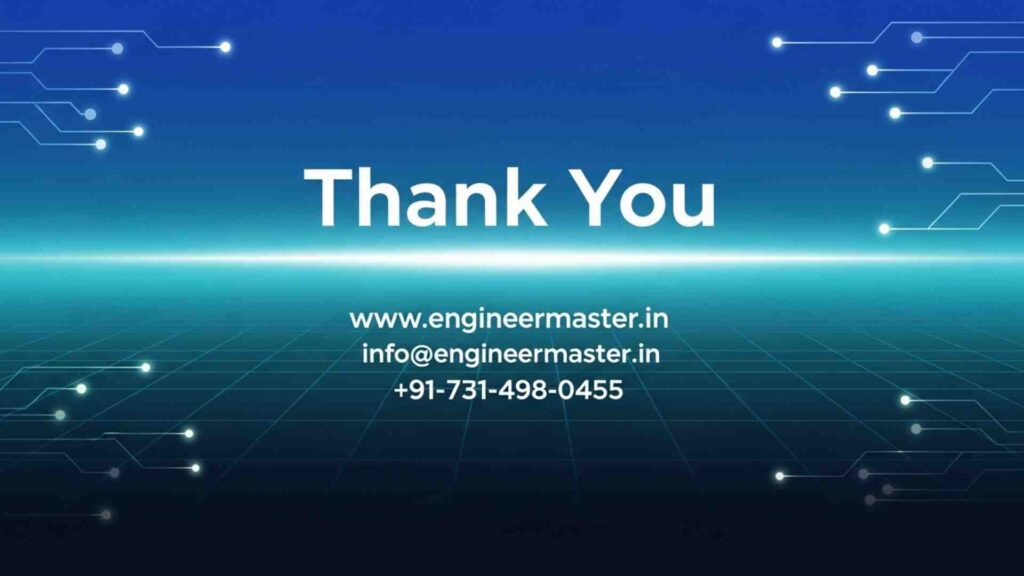
AI-driven business process automation for enterprises represents the most significant operational transformation in decades. Organizations that embrace this technology gain substantial competitive advantages. Those that hesitate risk falling behind more agile competitors.
The benefits extend across all business functions and industries. Cost savings free resources for strategic investments. Speed improvements delight customers and accelerate growth. Quality enhancements reduce risk and strengthen reputation.
Success requires thoughtful planning and execution. Technology selection must align with business objectives. Change management ensures organizational readiness. Continuous improvement maximizes long-term value.
The journey begins with a single automated process. Early wins build momentum and organizational confidence. Gradual expansion creates enterprise-wide transformation. Patient persistence delivers revolutionary results.
Leaders must act now to position their organizations for the future. AI-driven business process automation for enterprises isn’t coming tomorrow. It’s reshaping business today. The question isn’t whether to automate but how quickly you can capture the benefits.
Start your automation journey with a clear vision. Engage stakeholders across the organization. Select proven technology partners. Measure results rigorously. Learn from each implementation.
The transformation won’t happen overnight. Meaningful change requires sustained commitment. The rewards justify the effort many times over. Your enterprise can achieve operational excellence through intelligent automation.
The future belongs to organizations that harness AI effectively. AI-driven business process automation for enterprises provides the foundation for sustained success. Take the first step today toward transforming your operations. Your competitors already have.


